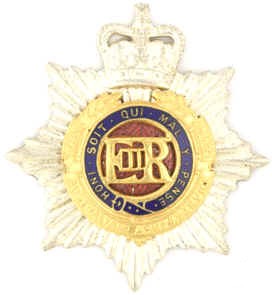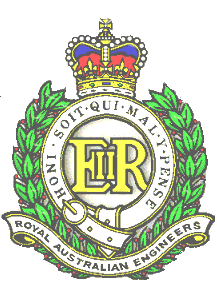 |
|
Royal
Australian Army Service Corps RAASC |
Before Federation, Army Service
Corps units were listed in each State's order of battle.
With Federation, the Australian Army Service Corps (AASC),
patterned along the lines of the Royal Army Service Corps, was
formed.
After reorganisation in 1912, in which the various
Military Districts of the Commonwealth were allotted companies of
AASC, the Corps found its companies included in the seven
divisions of the AIF. The AASC served with distinction in
both France and Palestine during World War I. |
During World War II,
the Corps again served with distinction, fighting at Tobruk and Alamein
and providing logistic support throughout the South West Pacific
campaigns where aerial delivery and amphibious resupply supplemented
normal road transport operations. At the end of World War II, the
Corps was granted the prefix ROYAL.
In post-war years, the
RAASC officers and soldiers served in Japan, Korea, Malaya, Borneo,
Singapore, Papua New Guinea and South Vietnam.

|
Royal
Australian Engineers |
| The
origin of the RAE Transportation Service dates back to 1929 with
the appointment in the RAE of a Director of Railways, retitled in
1941 as the Director of Road and Rail Transport.
The Directorate of Docks and the
Directorate of Water Transport were formed in 1942 and together
with the Directorate of Road and Rail Transport, merged in 1945 to
form the Australian Army Transportation Corps.
In 1947 the Service was
disbanded, with a Directorate of Transportation being established
within the RAE with the responsibility for water transport,
terminal operations and movement control. |
The service continued
to function as part of the RAE under the Directorate of Transportation
until the formation of the RACT in 1973. During its existence,
members of the RAE (Tn) Service saw action during the Second World War
in North Africa (Tobruk and Alexandria), Palestine and Papua New Guinea
and provided sterling service to the Allies on and among the islands of
the South West Pacific. Post war, RAE (Tn) members served in
Japan, Malaya, Burma, Korea, Singapore, South Vietnam, and Papua New
Guinea.


The RACT in 2000 has a
Regular Army strength of approximately 300 officers and 1,800 other ranks
and a General Reserve strength of approximately 180 officers and 1,300
other ranks.
Since its formation, the
Royal Australian Corps of Transport has gained a reputation worthy of that
held by its predecessors. |